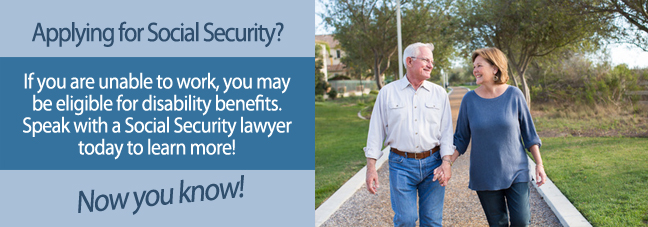Anyone who has applied for Social Security disability benefits knows that assembling the medical documents required by the Social Security Administration (SSA), with or without the help of a Social Security disability attorney, is a time consuming process.
Then there is the lengthy wait for the initial decision, which can take up to a year in some cases. It can be frustrating to have poured so much time and energy into your application for disability benefits only to have your disability application denied.
Your case is not unique; the SSA routinely denies 60-70% of claims at the initial application level. If your claim is denied, you are entitled to appeal the decision. Here is a look at the appeals process:
How the SSA Notifies You
After the SSA makes a decision with regard to your application for Social Security disability benefits, it will notify you by mail. If the SSA denies your claim, it will explain its decision.
When you get the denial letter, it is a good idea to note the date your received it; unless you can prove otherwise, SSA will assume you received it 5 days after it was mailed. This is important because you have only 60 days from the day you receive the denial letter to appeal the decision.
Contact a Social Security Lawyer If You Get Denied
You may request help from the SSA in filing your appeal on their website. However, this may be a good time to consult a qualified Social Security disability attorney if you have not already done so.
A professional can help you avoid some of the mistakes that can complicate or endanger your appeals case. More than 80% of disability appeals cases are denied at the next level of the appeals process, which makes it very important that you be able to present your case clearly and with all the appropriate information
The Reconsideration Stage
The next step in the disability appeals process is the reconsideration of your case by someone at the SSA who was not party to the first decision. This person or persons will review all the information you submitted in your application and will also consider any new evidence you may wish to submit.
ALJ Hearing
If your application is denied again, you may ask for a hearing. Held before an Administrative Law Judge, the hearing is much like a courtroom trial, in that you (or, if you are represented by someone, your representative) will present evidence and may bring witnesses to testify on your behalf.
You may bring new evidence to the attention of the judge, and both you and the judge will question your witnesses. There may be witnesses who testify against your application as well, and you have the right to question them.
The judge will then make a decision, based on the information presented at the hearing. You will be notified of the judge’s decision by letter.
Appeals Council
If your claim is denied a third time, you can ask the Social Security Appeals Council to review the hearing decision. Although the Appeals Council will consider your request, it is not obliged grant you a review if it believes the hearing decision was correct.
If the Appeals Council does grant you a review, it will either rule on your case itself or will return your case to another administrative law judge for further action. Again, you will be notified of the action to be taken by the Appeals Council by mail.
Once you have exhausted the Social Security disability appeals process, you can file suit in federal district court.
What to Keep in Mind
The SSA has a large backlog of appeals cases and is working to reduce the time applicants must wait before presenting their cases to the administrative judge.
For example, the waiting time in the Atlanta in 2007, when current Social Security Commissioner Michael J. Astrue took office, was almost 2 ½ years. By adding new hearing offices and personnel, that wait has been cut to a little over a year. A recent article in the Rockdale Citizen noted that Astrue’s goal is to reduce the waiting time across the country to an average of 270 days.
Additional Resources
- I was denied Social Security disability for the 2nd time... Is it worth continuing to pursue benefits?
- If I Get Denied Disability Benefits at a Hearing, What Next?
- Help! My Application was Denied at the Initial Disability Review
- How to React if Your Social Security Disability Claim or SSI Claim is Denied
